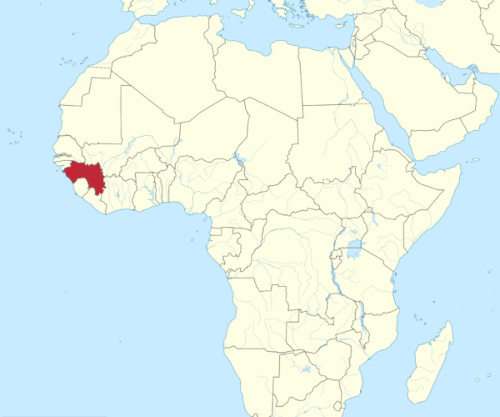-
Fodécariah village
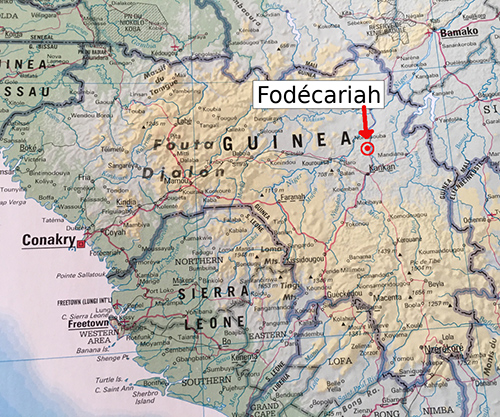
Map of Guinea with the location of Fodécariah (red arrow)
The Guinean village of Fodécariah, where our numerous projects were realised, is located 60km north of Kankan. As can be seen on the map on the right, it is located in the north-east of the country, directly on the Milo River, which is a tributary of the Niger. Administratively, it belongs to the sub-prefecture of Balimana, which in turn is a sub-prefecture of Kankan. Fodécariah is the largest village in the Balimana metropolitan area, which has a total of about 50,000 inhabitants.
Fodécariah is a typical Upper Guinean village with homes made from clay. It has around 16500 inhabitants including 4000 children (830 primary school students, and 380 secondary school students). There is still no public electricity supply and there are too few wells with drinking water. Despite this somewhat backward state of affairs, its inhabitants are striving for better education for their children. The primary school was renovated in 2014 and extended by 12 classrooms. Of the 830 students, 413 receive a classical French education, whilst the remainder receive a French-Arabic education. The school currently employs seven primary school teachers with a monthly wage of 50 €. The secondary school that we built now employs 9 teachers with a monthly wage of 105 €.
Despite democratic elections and improvements in the education system, there are still a great lack of teachers and considerable failings in teacher training. Consequently, primary school classes typically have 70-90 children.-
The house of Mamoudou Keita
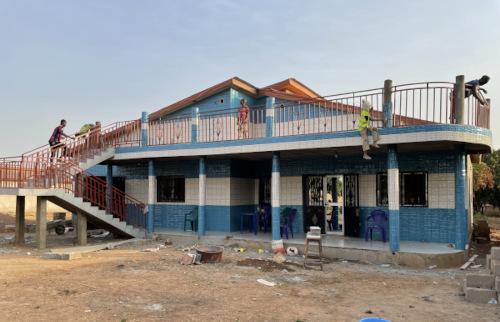
Mamoudou's house is not yet finished.
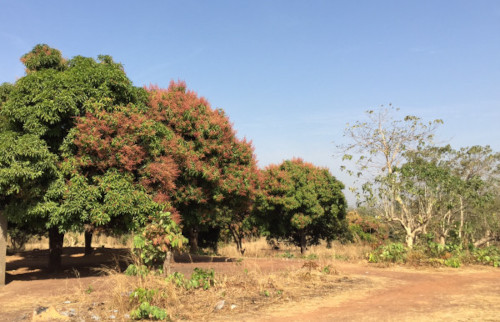
It is in a quiet location..
It is equipped with several bedrooms so that we can also use his house as accommodation during our annual delegations in the future. This is particularly helpful because there are neither guesthouses nor hotels in Fodécariah, and so accommodation close to the village has always been difficult.
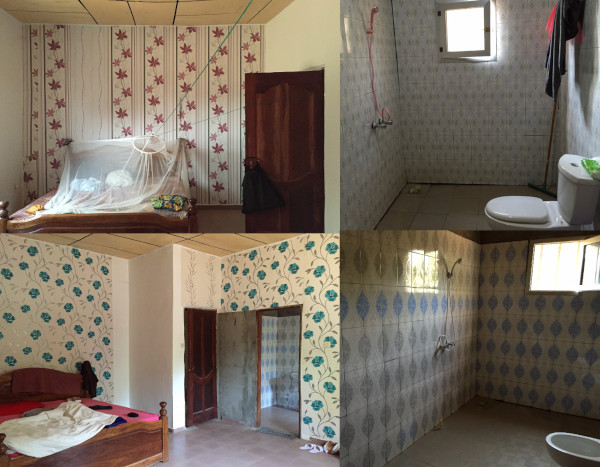
Several tastefully furnished dormitories and bathrooms..
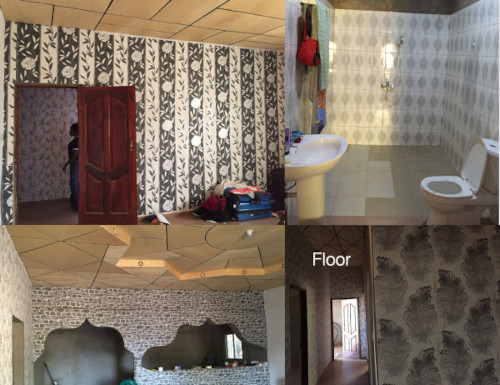
..await exhausted delegation guests.
-
Kankan / Higher Guinea
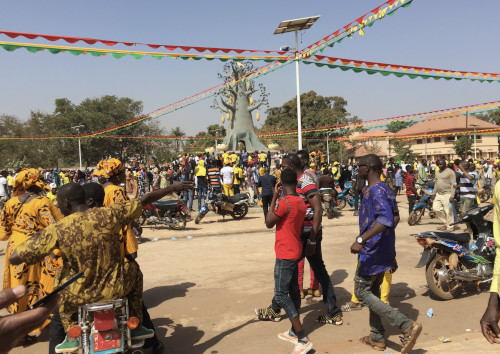
A decorated square in Kankan on the occasion of a visit by the President
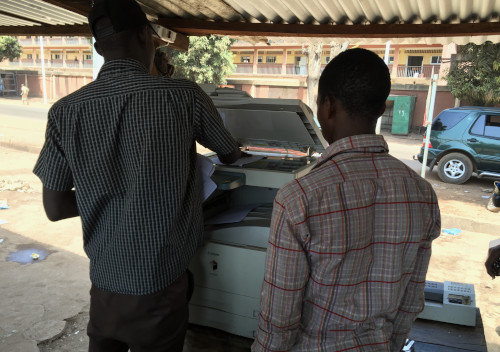
Typical: roadside photocopying service
The capital city of the region of Upper Guinea is Kankan (population 190000 ). Kankan is about 700kilometres from the capital city of Conakry.
Upper Guinea has an area of 103000square kilometres. There are on average 9 inhabitants per square kilometre.
Upper Guinea lies between 200 and 400 metres above sea level and has two main seasons.
- Winter: From November to May and very dry. Whilst the night time temperatures in December are about 12°C and daytime temperatures about 28°C the temperatures between march and April climb to 40 bis 45°C.
- Summer: Very rainy from June to October. This is the time for growing crops.
The inhabitants of Upper Guinea live principally from the cultivation of cotton, mangos, peanuts, and shea butter.
Upper Guinea is above all the cultural centre for the Mandinge – an old traditional West African trading people.
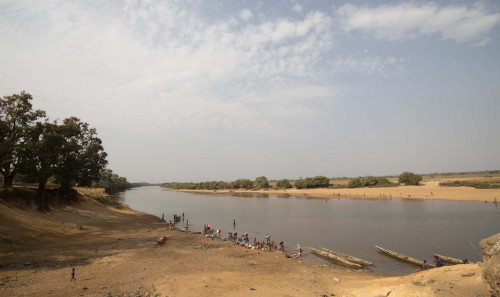
Like Fodécariah, Kankan is also located on the Milo River.
-
Further Links
